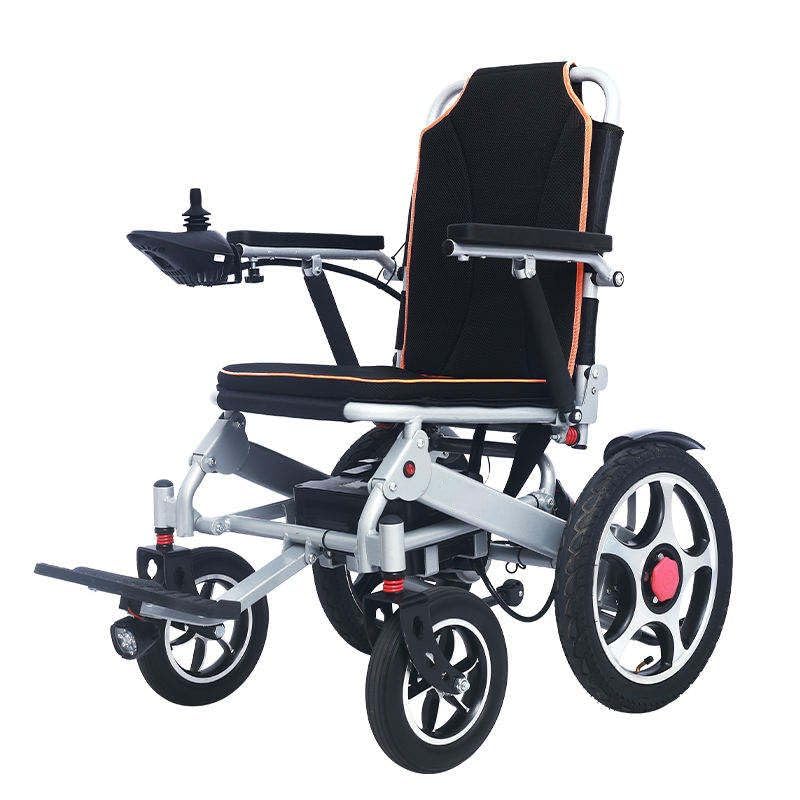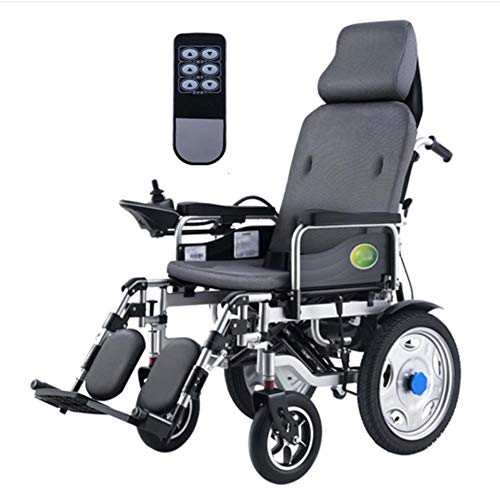10 Inspirational Graphics About Electric Wheelchair With Joystick
페이지 정보
작성자 Concepcion 작성일24-09-09 05:05 조회62회 댓글0건관련링크
본문
 electric wheelchairs uk electric wheelchair price With Joystick
electric wheelchairs uk electric wheelchair price With JoystickJoysticks on power wheelchairs may enhance their use and independence. Standard joysticks are not able to accommodate the unique characteristics of hand dysfunction.
 This study evaluated the effectiveness and satisfaction of custom-designed power wheelchair Joysticks manufactured with 3D printing. Evaluation was conducted using the modified power-mobility assessment (PIDA), National Aeronautics and Space Administration Task Load Index and Psychosocial Impact of Assistive Devices Scale.
This study evaluated the effectiveness and satisfaction of custom-designed power wheelchair Joysticks manufactured with 3D printing. Evaluation was conducted using the modified power-mobility assessment (PIDA), National Aeronautics and Space Administration Task Load Index and Psychosocial Impact of Assistive Devices Scale.Control
The control system of a power wheelchair includes two key components: the joystick and the electronics (also called the controller). Joysticks that are standard mount on the left or right sides of the chair. However, more complex rehab chairs may feature swing-away mounts that allow the joystick to be positioned in the centre of the seat.
The manner in which a joystick can be mounted and used is a significant factor in determining whether it can be successful for a particular user. For instance when a person has significant tremors, it is essential to ensure that the joystick is designed such a way that the actions will not cause accidental activations of the chair. Standard EPW joysticks use proportional input devices which respond to the deflection amount of the gimbal in order to control the chair's movement (similar to the video game controller or a car accelerator pedal).
There are numerous alternative control options for power wheelchairs that require very minimal force to activate. These include switches sip and puff controls, head array systems and the chin control. Certain of these control systems require an additional interface to connect to the wheelchair. However, many of them are compatible with new joysticks that incorporate Bluetooth into the handles.
Some wheelchair joysticks have a screen to display the status of the system and provide feedback to the user, which is particularly beneficial for those with cognitive or visual impairments. Some advanced joysticks allow for a wide range of accessories that include the TV, environmental controls and tablet.
Whatever the technology, a joystick is only useful if it's easy for the user to use. For this reason, it is important to consider the size and location of the buttons on a joystick to ensure that they are easy to access. It is also crucial to take into consideration the sensitivity of the joystick which can be adjusted to a range of levels depending on the needs of each user.
Comfort
A joystick-controlled chair has many advantages that a manual chair does not offer. They can reduce fatigue caused by operational factors and can travel longer distances than manually operated chairs. Additionally, they can be used in areas with fewer spaces and more difficult terrain than a manual one, for example, outdoor slopes or uneven surfaces. With this added freedom, users can experience a freedom of movement that breathes new life into their lives and reminds them of how it feels to be able to move around independently.
There are numerous different powered wheelchairs that are available, each with their own unique features. The number of bells and whistles that a particular model features will depend on what the user prefers and needs. Some of the most common features include:
The control options on an cheap electric wheelchairs chair with the joystick is a possibility to meet the needs of each individual. This includes the type and location of the knob, ball or handle. Joysticks are usually located on the armrests of the driver's seat While others are set on the front or rear of the seat to make it easier for the an attendant to reach. Some joysticks can be mounted on the side for people who have limited shoulder mobility or a weakness in their muscles.
Other features are more personal in nature like the size and design of the joystick display screen. Some are backlit or in colors that are easier to read for people with low vision. Some models feature extra modes that offer visual or audio navigation cues. They also have clocks, odometers, and indicators of battery charge.
The ability of a joystick to move within a narrow turning radius is also important. The best models will have a smaller turning radius, which makes it easier to maneuver through obstacles and narrow spaces, such as hallways. This narrow turning radius allows for easier navigation in public places and in stores. This narrow turning radius is particularly useful for people with mobility issues such as cerebral palsy, multiple sclerosis, ALS Huntington's disease spinal cord injury or brainstem stroke.
Safety
Power wheelchairs are designed with safety in mind. They have braking systems that are reliable which can slow down speed quickly when the consumer presses the joystick control lever. The chairs are also equipped with anti-tip rear wheels that stop the chair from tipping forward.
The most commonly used type of joystick is a proportional control, which is similar to accelerator pedals and video game controllers in that the more the joystick is moved away from its center, the more quickly the wheelchair moves. These types of joysticks require intact proprioception and finger dexterity in order to operate effectively. A standard joystick is placed on the armrest, but a variety of different special controls are available to put the controls in the middle or at the sides of the seat.
Even with specialized rigging, some people might not be able to deflect the handle. This could be the case with some people who suffer from spasticity, which can cause muscles to stiffen or even die (atrophy). In these cases the use of a head control unit that converts the movement of a consumer's head into the required command for the light electric wheelchair might be a better choice.
Another thing to take into consideration is the size and placement of buttons on the joystick. If the buttons are too far to the left or difficult to reach, it may affect the user's seating position and cause stress on their hands. If the joystick is too far back, it may be difficult to maneuver the chair or turn the wheels.
Additionally, an heavy duty electric wheelchair uk chair should always be used with a seatbelt secured. The most powerful wheelchairs can travel at speeds of up to 8 mph and a seatbelt that is not fastened could result in grave injuries or even death. Batteries should be charged frequently and preferably every night. This will allow them to live longer and help maintain their effectiveness. You should also keep your chair maintained regularly to ensure that all components are operating correctly.
Accessories
The joystick is an essential component of any power wheelchair and there are numerous accessories that may be added to boost its capabilities. These range from basic switches to more sophisticated interfaces that can connect to communication devices, or external environmental control units. A higher-end cheap power chairs wheelchair usually comes with several controller components that can be utilized and configured to meet the requirements of a particular user. For example, a non-expandable controller will typically only accept a proportional joystick as an input device, whereas an expandable controller can allow puff and sip controls, special switches and head array systems. Some of the more advanced controllers can also operate up to two power seating actuators, which are able to adjust the seat's position and tilt of the seat.
The most basic type of joystick that is commonly used in the clinic is an inverse control, often called a motion sensing joystick. This type of joystick, like automobile accelerator pedals and video game controllers responds to the force applied on the stick by increasing its output (i.e. The speed of the wheelchair increases as the stick is moved away from the center. This requires a significant amount of intact proprioception and dexterity for effective use.
The technology that is used today can compensate for small amplitude movement during EPW driving. However, it's not able to detect and adjust for many more severe unintentional motions, such as those that result in larger amplitude tremors, or involuntary movements that aren't associated with conscious intention like athetosis.
Most wheelchairs can be customized and programmed by an expert. These parameters include changing the torque generated by the motor and adjusting the speed of the chair. They can be used to set the dead zone, which is the distance in which the EPW won't generate an output. Some controllers also have the ability to save backup programs, which is useful for a doctor to have on hand in case in the event of an emergency or patients with varying symptoms.
댓글목록
등록된 댓글이 없습니다.














